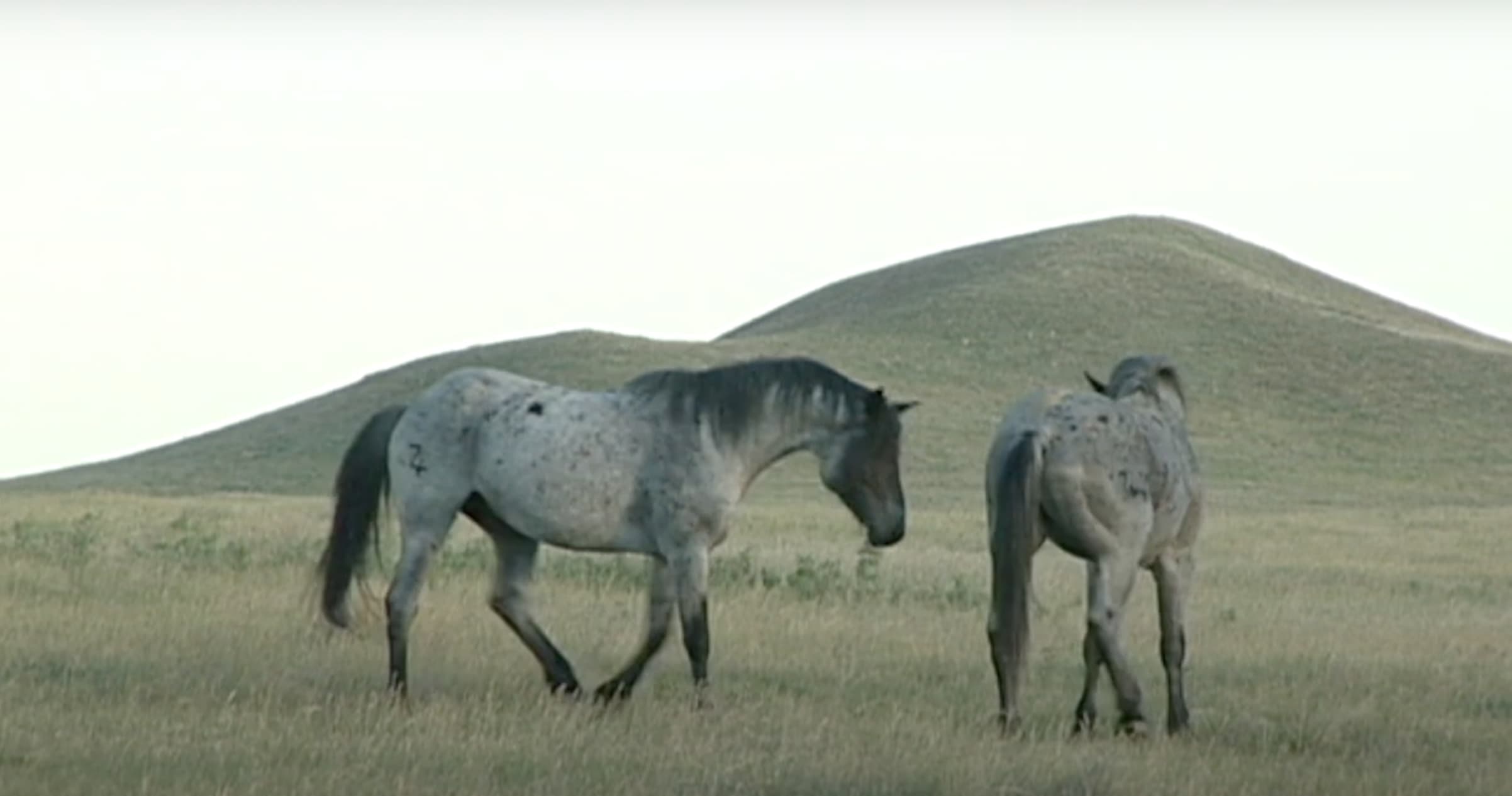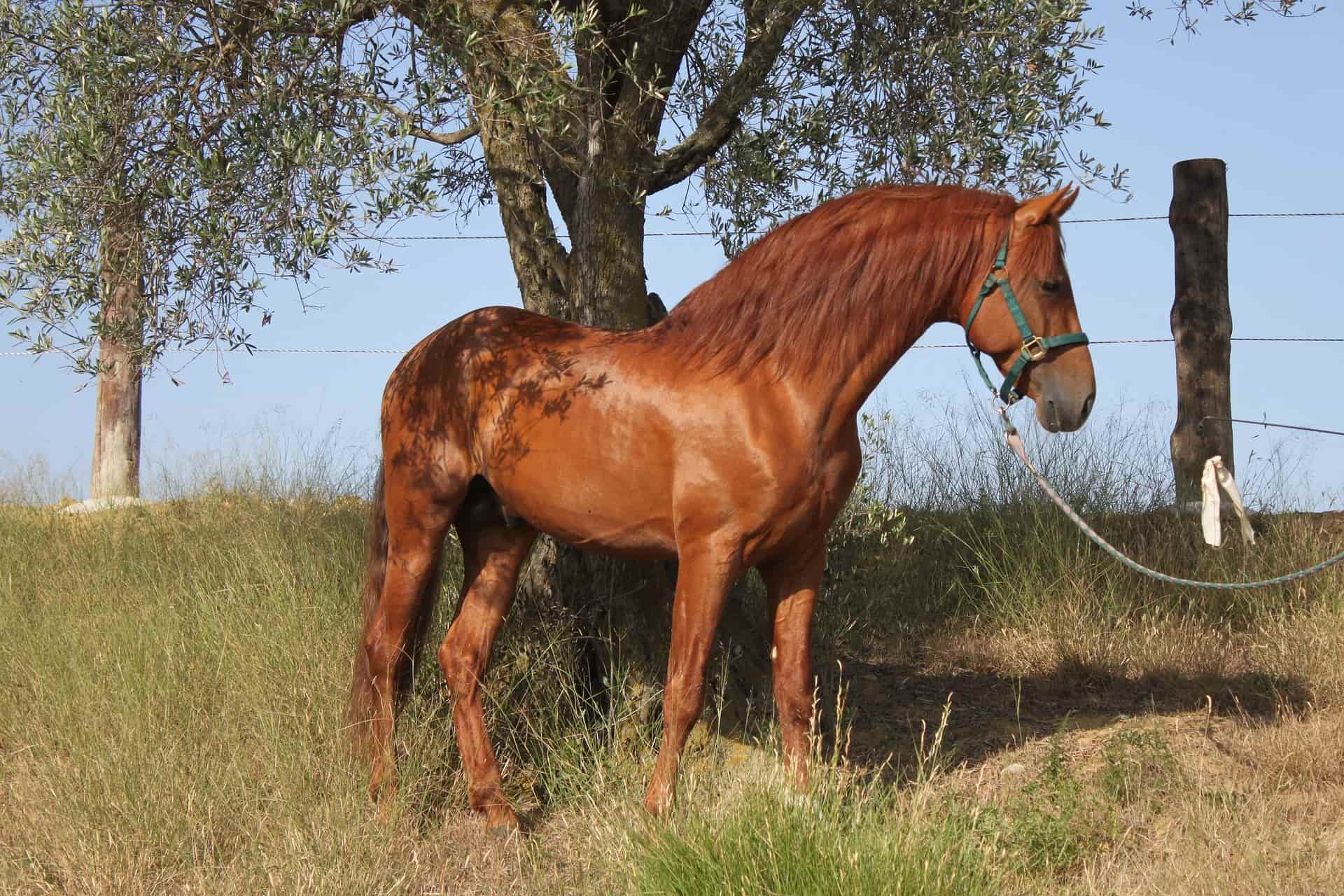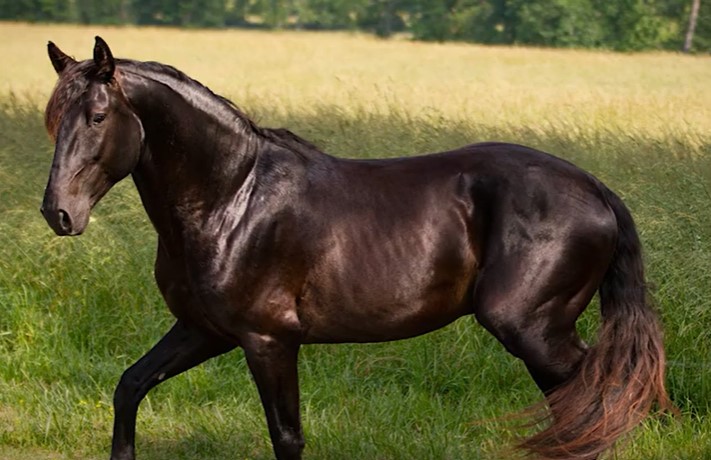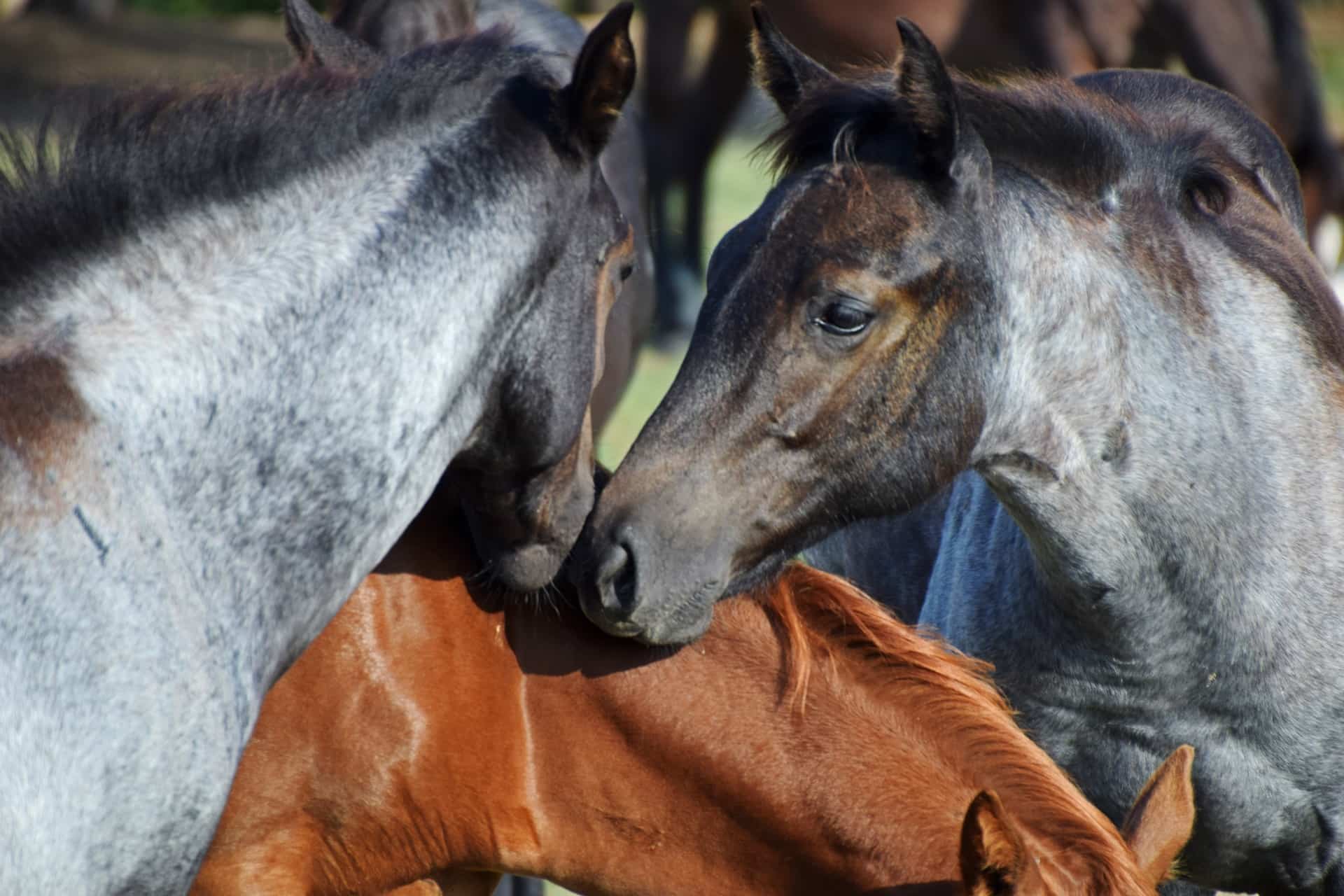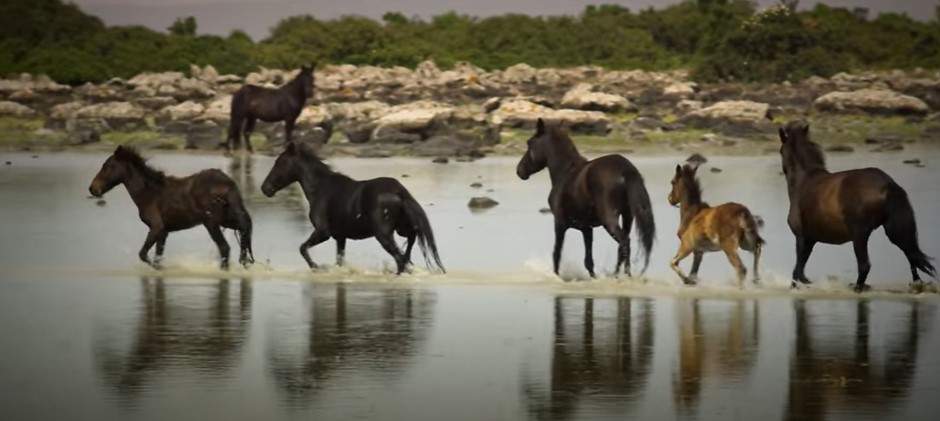Sturdy, strong, and majestic — these are the words most often used to describe the Nokota horse breed. Considered feral horses, Nokota horses are a dying breed with just about 1,000 individuals left across the entire globe.
Mainly roaming the dusty, southwestern badlands of North Dakota, the Nokota horse is a horse variety that not all people will have the privilege of seeing in person. On the upside, you can learn everything there is to know about the powerful Nokota with this complete guide.
The History of the Nokota Horse
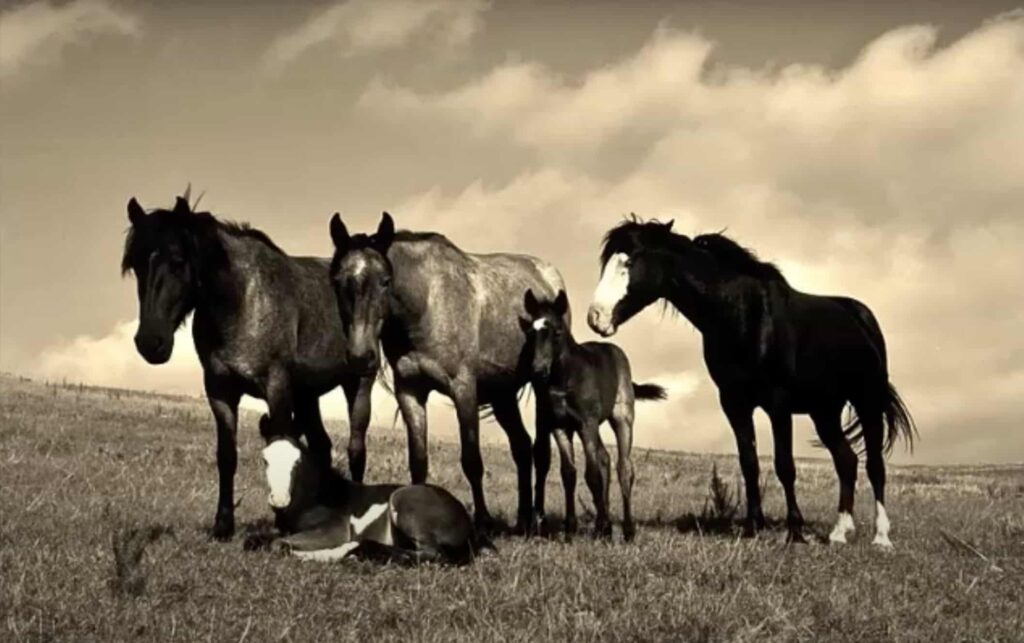
The Nokota horse has quite a colorful history that spans centuries. According to studies, the Nokota has genetics from Native American horses, Spanish horses, Thoroughbreds, and harness horses, among other outside bloodlines and related breeds.
The very first Nokota horses were used by native Indians as early as the 1800’s. In 1881 however, Sitting Bull — the leader of a the Sioux tribe — was strong armed into surrendering to US armed forces.
It was during this time that the local Indian ponies under the care of the natives were consequently handed over to the Americans. Uninterested in keeping the herds to themselves, these early Americans got rid of the Nokota horses through public sales.
But taking an interest in the herds of unique horses, the Marquis de Mores from western North Dakota decided to purchase 250 individuals of the Nokota breed. These rescued animals were then kept in herds in the town of Medora — the gateway to what we know today as Theodore Roosevelt National Park.
When he died in 1896, his farmhand rounded up whatever of the herd he could find on the property. Unbeknownst to him however, many of the horses escaped into the neighboring properties, free to roam as wild horses.
This became a difficult time for the Nokota horse. With ranchers working with state and federal agencies, the Nokotas were nearly wiped out of existence in an effort to reduce competition for livestock grazing. Essentially, they hoped to increase grazing opportunities for domestic livestock by eliminating grazing competition in the form of wild horses.
Fortunately, the development of the Theodore Roosevelt National Park enclosed the feral horses in the badlands, inadvertently protecting them from the slaughter efforts. Although the National Park Service itself made attempts of removing the wild horses from within the National Park.
They did this by selling whatever Nokota horses they could find within the property, and even releasing stallions of other horse breeds into the area to taper down the Nokota lineage. That’s when the Kuntz Brothers promptly worked to protect the animals.
At a glance, brothers Leo and Frank Kuntz saw that there was something unique about the breed. Since then, they’ve made it their life’s work to preserve the horse variety. And to pay tribute to the animal’s North Dakota roots, the brothers came up with the name ‘Nokota.’
In 1999, the efforts of the Kuntz family led them to establish the Nokota Horse Conservancy — a non-profit organization that aims to protect Nokota horse populations and reintegrate the breed back into its native American origins. Today, they use the Nokota Horse Registry to keep tabs on all of their horses, which they estimate at around 1,000 individuals.
Features and Characteristics of the Nokota Horse

The Nokota horse looks powerful and majestic at a glance. These wild horses typically come in a beautiful blue roan color that’s fairly rare among other breeds. Wild Nokotas may also come in the colors black (as the base for blue roan) and gray. You can read our guide to learn more about roan horses.
Other less common colors for the Nokota horse include:
- Red roan
- Bay
- Chestnut
- Dun
- Palomino
As the Nokota roamed the Missouri badlands and the northern plains of North Dakota, they were exposed to the elements, erratic weather conditions, and freezing winter storms. And with humans ever a risk to their existence, the Nokota horse breed developed physical characteristics that would protect it from both its environment and from humans.
Suggested Read: Missouri Fox Trotter Horse Breed Profile
That said, the Nokota boasts a beautiful, angular frame. The athletic, strong musculature converges to a V-shaped chest while its low set tail brings balance to its overall frame. Its prominent withers and wide shoulders make it a powerful runner, capable of traversing difficult terrain common in the badlands.
Nokota Horse Personality and Performance
Because it is such a rare breed, the Nokota Horse Conservancy has yet to sell any of the Nokotas under their breed registry. Wanting to preserve the lineage, the Conservancy aims to protect the breed from crossing with outside bloodlines.
Nevertheless, some people have managed to acquire Nokotas for domestication, dutifully registering their animal under the Nokota Horse Registry. Priced between $1000 and $5000 for an individual Nokota, these horses are some of the most expensive breeds you’ll find. The higher the pedigree and the better the training, the steeper the prices will go.
Although intelligent and quick learners, Nokotas are notoriously stubborn. Classed as racehorses, Nokotas perform well in speed competitions where treacherous terrain may present a hurdle for other horses.
Even more interesting, this breed has long proven their agility especially in jumping competitions. With powerful legs and shoulders, these horses effortlessly glide over obstacles with unchallenged grace and precision.
But not all Nokota horses have been used in competition and tournaments. Because of their agility and speed, Nokotas have found purpose in fox hunting under the care of local ranchers. These Nokota horses are mainly recognized as the ‘ranch type’ Nokota horses or the National Park Ranch subvariety.
According to experts, ranch bred horses produced more prominent physical features, stronger muscles, and larger horses in general. This made them appear larger than the National Park Traditional Nokota. Whichever classification however, all Nokota horses demonstrate what’s called the ‘Indian shuffle’ gait.
The Nokota Horse — One of Many Noteworthy Breeds
Thanks to the efforts of the Kuntz brothers and the Nokota Horse Conservancy, the beautiful Nokotas continue on today as a beautiful, distinct breed. Powerful, regal, and intelligent, these horses demonstrate the essence of perseverance and sheer grit in the face of adversity.
